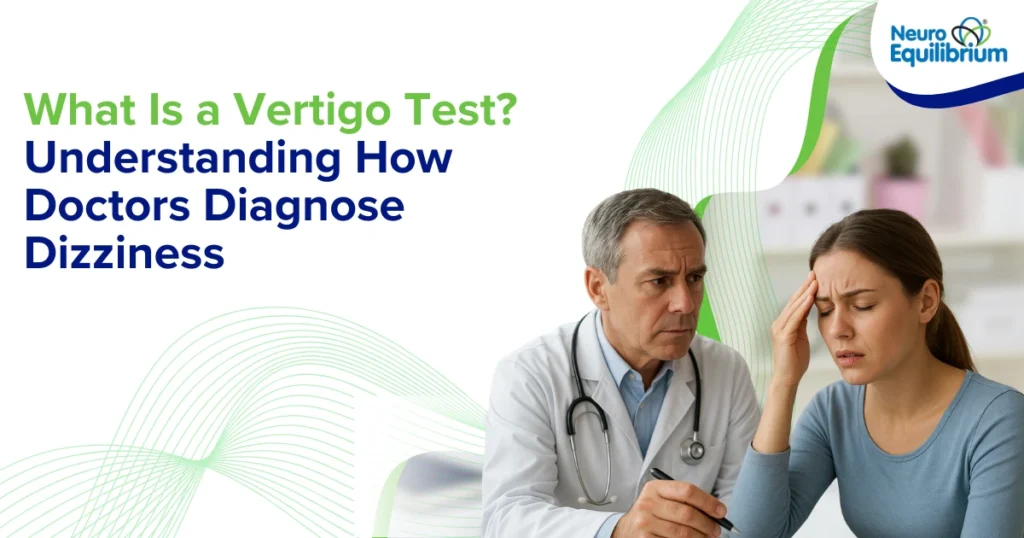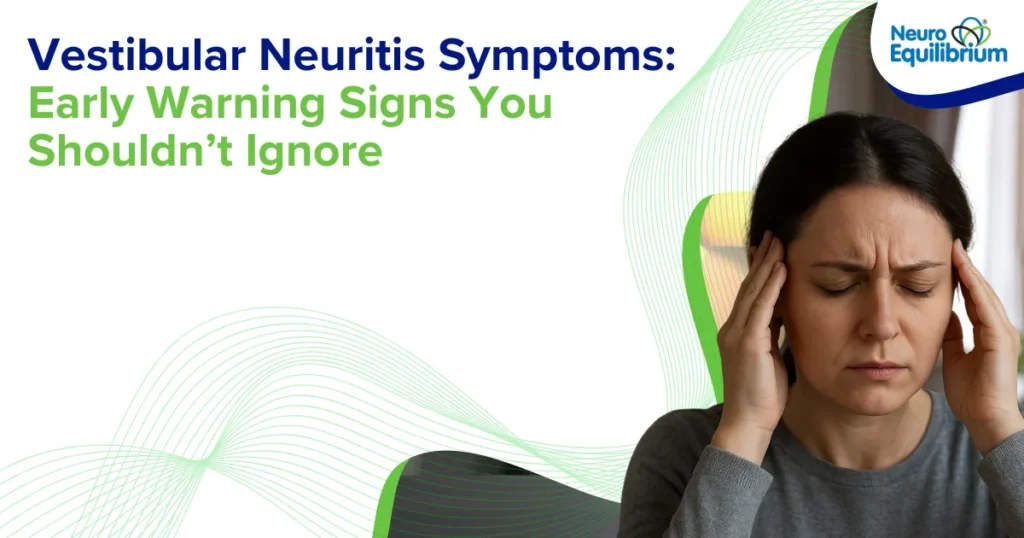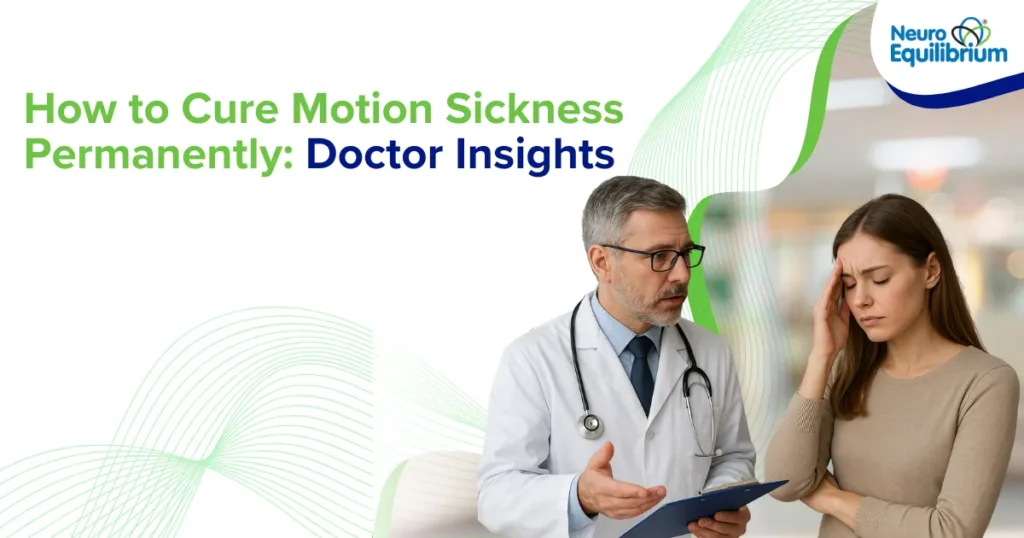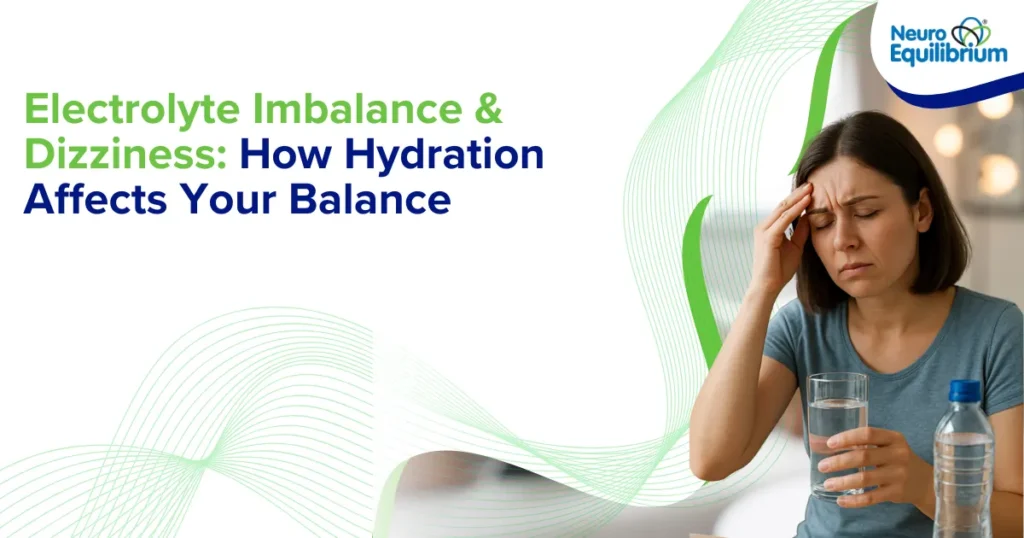Vertigo Test: Meaning, Procedure, and Importance
Sometimes it can feel like the room is moving even when you are perfectly still. That dizzy, unsteady feeling can be worrying, especially when there is no clear explanation. Doctors often recommend a vertigo test, but many patients do not fully understand what is vertigo test or what the results mean.
Vertigo is not a disease itself; it is a symptom that signals a problem in the body’s complex balance system. This system relies on a constant flow of information from three key areas: the inner ear (which senses movement and gravity), the eyes (which provide visual cues), and the nerves and joints (which inform the brain about body position). When these signals don’t align properly, the brain becomes confused and the world can feel like it’s spinning.
Because vertigo can arise from various causes from minor ear issues to serious neurological conditions medication alone is rarely enough. The most effective way to uncover the root cause is through a test for vertigo, which provides accurate insights for targeted treatment.
Know More About Vertigo
- Do You Need a Vertigo Specialist?
- Home Management of Vertigo: A Guide to Symptom Alleviation
- Vertigo in Pregnancy: What You Need to Know
Why a Proper Diagnosis with a Vertigo Test Is Crucial
Since vertigo can have multiple causes, treatment must be tailored accordingly. For instance, Benign Paroxysmal Positional Vertigo (BPPV) is treated with simple repositioning maneuvers like the Epley maneuver, while vestibular migraine requires medication and lifestyle changes. Without having the vertigo test and diagnosis properly done, the correct illness might be missed — delaying recovery or overlooking serious conditions like stroke.
A thorough vertigo test offers an objective glimpse of your balance system, allowing doctors to design individualized treatment programs that target the exact cause of dizziness for long-term relief.
The Diagnostic Process: Understanding Vertigo Test Meaning
When patients ask about vertigo test meaning, it refers to a series of assessments that check how well your balance and coordination systems are working. It’s not just a single test but a combination of evaluations that give a complete picture of your inner ear, eyes, and brain function.
1. Patient History: The doctor begins by asking about your symptoms, triggers, duration, and related issues like headaches, nausea, or hearing loss.
2. Physical Examination: Your eye movements, posture, and coordination are examined to find clues about the cause of vertigo.
3. Specialized Diagnostic Tests: A test for vertigo often includes advanced balance and vestibular tests to pinpoint whether the issue originates from the inner ear or brain.
Key Types of Vertigo Tests
- Videonystagmography (VNG):
A primary vertigo test where special goggles record your eye movements. Abnormal eye movements (nystagmus) indicate a balance issue.- Caloric Testing: Warm and cool air is gently blown into the ear canal to assess ear function.
- Positional Testing: Head and body movements are used to detect BPPV.
- Caloric Testing: Warm and cool air is gently blown into the ear canal to assess ear function.
- Video Head Impulse Test (vHIT):
Evaluates semicircular canal function by tracking how your eyes respond to quick head movements. - Audiometry (Hearing Tests):
Since the inner ear controls both balance and hearing, hearing assessments help diagnose combined conditions like Ménière’s disease. - Imaging (MRI/CT):
Used in complex cases to rule out neurological conditions like stroke, multiple sclerosis, or tumors.
The Role of Vertigo Specialists
A vertigo test is most effective when performed by trained specialists such as:
- Neurotologists: Experts in both ENT and neurology, capable of managing complex vertigo cases.
- ENT Specialists: Focus on inner ear-related vertigo causes.
- Neurologists: Diagnose vertigo caused by brain or nerve dysfunction.
- Vestibular Therapists: Guide patients through rehabilitation exercises for improved balance.
What Happens After a Vertigo Test?
Once your vertigo test is completed, the results help determine whether the problem lies in the inner ear (peripheral vertigo), brain (central vertigo), or another medical condition such as anemia, diabetes, or blood pressure changes.
Based on the findings, the doctor may recommend:
- Repositioning maneuvers (like Epley or Semont)
- Medications for infections or migraine-related vertigo
- Vestibular rehabilitation therapy (VRT)
- Lifestyle adjustments — sleep, diet, hydration, and stress management
- Additional tests or specialist referrals, if necessary
The main benefit of getting a test for vertigo is that it enables precise diagnosis and long-term treatment, rather than temporary symptom relief.

NeuroEquilibrium’s Advanced Approach
At NeuroEquilibrium, we believe accurate diagnosis begins with a thorough vertigo test. With over 220 specialized clinics across India, we provide access to advanced diagnostic tools like VNG and vHIT.
Our expert neurotologists, ENT doctors, and neurologists collaborate to create personalized treatment plans based on comprehensive test results. Patients are guided step-by-step through their results, rehabilitation, and recovery journey — ensuring complete balance restoration.
Conclusion
Vertigo is a symptom that demands a thorough evaluation — not just temporary fixes. A professional vertigo test helps uncover the true cause of dizziness and leads to effective, lasting treatment.If you’re wondering what is vertigo test or how it can help you, visit your nearest NeuroEquilibrium clinic to get a detailed assessment. Take the first step toward regaining your balance, confidence, and peace of mind.
1. What is the main purpose of a vertigo test?
The primary reason is to discover the precise cause of your dizziness or spinning sensation. The right vertigo test can determine whether a person has a problem in the inner ear, or something more significant with the brain or other body systems, and this is necessary to achieve the right treatment.
2. Are vertigo tests painful?
The majority of vertigo tests do not hurt. Others, such as the caloric test as part of a VNG, may only make you feel a bit dizzy or warm, although this is only temporary and is safely experienced.
3. How long does a typical vertigo test take?
Depending on the type and number of tests conducted, you may need 30 minutes to a couple of hours of a whole set of vertigo tests.
4. What should I do to prepare for a vertigo test?
Your physician will give you specific guidelines, but typically, you must not eat a heavy meal prior to the test and you must discontinue specific medications (particularly, those to treat dizziness) as prescribed by your physician. It is also good to wear comfortable clothing.
5. How are the results of a vertigo test used for treatment?
The vertigo test results give your specialist a clear understanding of the underlying issue, allowing them to create a focused and efficient treatment plan tailored to your specific needs.
















